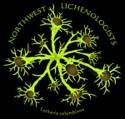Common names are mentioned in Trevor Gowards Lichens of British Columbia volumes, e.g. Cladonia macilenta as “ Lipstick powderhorn (lipstick cladonia; white pin lichen; scarlet toothpick cladonia; scarlet-tipped cladonia; smaller pin lichen, pin lichen)” while “Iceland moss” is used for Cetraria delisei, C. ericetorum, C. islandica, C. laevigata and C. subalpina. Perhaps there could be an accepted list of common names as there is for birds.
Remembering the Latin names is more than enough for me. Only a few common names are familiar, e.g. “fairy barf”, of which I agree with Bruce - “Although many English-language names have been made up for lichens by lichenologists, most people, lichenologists and nonlichenologists alike, don’t know them. But Icmadophila is one of the few lichens with an actual common name - that is, commonly used by nonlichenologists - “fairy barf” (or some synonym of that). Although other less memorable but presumably less offensive alternatives have been published, I have never heard them in use.” - McCune, Bruce. 2017. Microlichens of the Pacific Northwest. Volume 2: Keys to the Species. (Unlike e.g. “dog vomit slime mold”, Fuligo septica, “fairy barf” seems pretty good.)
Recently came across "Appalachian Dust Bunnies" for Lepraria lanata and "Tammy’s Pumpkin Pails" for Sticta fragilinata.
An interesting site - https://www.curioustaxonomy.net/rules.html
can't resist a few favorites:
Allobates niputidea Grant et al., 2007 (frog) In their paper describing the frog, the authors explain the specific epithet as "the name commonly applied by Colombian herpetologists to this and other small, brown frogs of unknown identity." What they do not say is that the word is actually a colloquial Spanish phrase, "ni puta idea", meaning, "[I have] no fucking idea." [Copeia 4: 844]
Archelon Weiland, 1896 (Cretaceous turtle) This turtle was 15 feet long, 4500 lbs., possibly the largest chelonian ever. In the 1966 film "One Million Years B.C.," fur-bikini-clad Raquel Welch encounters a stop-motion giant turtle lumbering toward the sea. She alerts her fellow tribesmen by yelling "Archelon!", the animal's true scientific name and the only 'real' word said by any of the movie's cast. All of the rest of the cavepeople's language was completely made up.
Mammuthus exilis Stock & Furlong, 1928 (pygmy mammoth) The scientific name means the same as the common name. - my favorite oxymoron
Strigiphilus garylarsoni Clayton, ~1989 (owl louse) "I considered this an extreme honor. Besides, I knew no one was going to write and ask to name a new species of swan after me. You have to grab these opportunities when they come along." - Gary Larson

